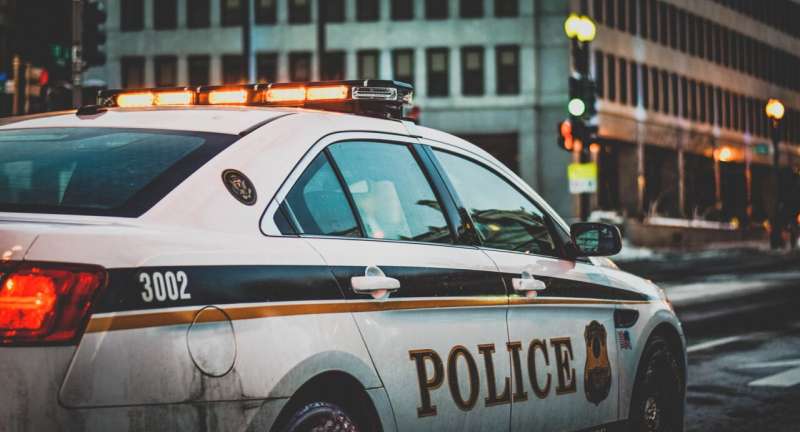This article has been reviewed according to Science X's editorial process and policies. Editors have highlighted the following attributes while ensuring the content's credibility:
fact-checked
peer-reviewed publication
trusted source
proofread
New study shows which neighborhoods police spend most time patrolling

Using anonymized smartphone data from nearly 10,000 police officers in 21 large U.S. cities, research from Indiana University finds officers on patrol spend more time in predominantly Black and Hispanic neighborhoods.
"Research on policing has focused on documented actions such as stops and arrests—less is known about patrols and presence," said Kate Christensen, assistant professor of marketing at the IU Kelley School of Business.
"Police have discretion in deciding where law enforcement is provided within America's cities," she said. "Where police officers are located matters, because it affects where crimes are deterred and what the public knows about crimes as they happen. Police presence can influence when and where crime is officially recorded."
Christensen and her colleagues at University of California, Los Angeles; University of California, Irvine; and American University are the first to use anonymized smartphone location data to identify and study the movements of police officers while on patrol in America's cities.
Their article, "Smartphone Data Reveal Neighborhood-Level Racial Disparities in Police Presence," appears in The Review of Economics and Statistics, which is edited at the Harvard Kennedy School.
Few police departments collect detailed officer location data, and even fewer release it publicly. This analysis of smartphone GPS data allowed researchers to study where officers chose to spend their time, including when they were patrolling outside their cars.
GPS data revealed a strong correlation between racial and ethnic composition of a neighborhood and police presence.
"Our findings suggest that disparities in exposure to police are associated with both structural socioeconomic disparities and discretionary decision making by police commanders and officers," researchers wrote.
On average, the research indicated that police spent:
- 6% more time in areas of a city where the fraction of Black residents was 10% higher.
- 2% more time in places with 10% higher share of Hispanic residents.
- 7% more time in places with 10% as many Asian residents.
Variation in socioeconomic status, social disorganization and violent crime can explain:
- 35% of the additional officer time spent in Black neighborhoods.
- 33% of additional time spent in Hispanic neighborhoods.
- All additional officer time spent in Asian neighborhoods.
When they combined police presence data with geocoded arrest data available for six cities—New York City, Los Angeles, Chicago, Dallas, Austin and Washington, D.C.—Christensen and her colleagues found that higher arrest rates of Black residents were connected to more officer time spent in Black neighborhoods.
"This neighborhood-level disparity persists after controlling for density, socioeconomic and crime-driven demand for policing, and may be lower in cities with more Black police supervisors—but not officers," she said. "Patterns of police presence statistically explain 57% of the higher arrest rate in more Black neighborhoods."
The researchers used data provided by Safegraph, which recorded "pings" indicating where smartphones are at a certain time. That information was linked to police station location data published by the Department of Homeland Security and geofence data provided by Microsoft. To identify patrol officers, the sample included phones used at 316 police stations in 21 cities between February and November 2017.
More information: M. Keith Chen et al, Smartphone Data Reveal Neighborhood-Level Racial Disparities in Police Presence, Review of Economics and Statistics (2023). DOI: 10.1162/rest_a_01370
Journal information: Review of Economics and Statistics
Provided by Indiana University



















